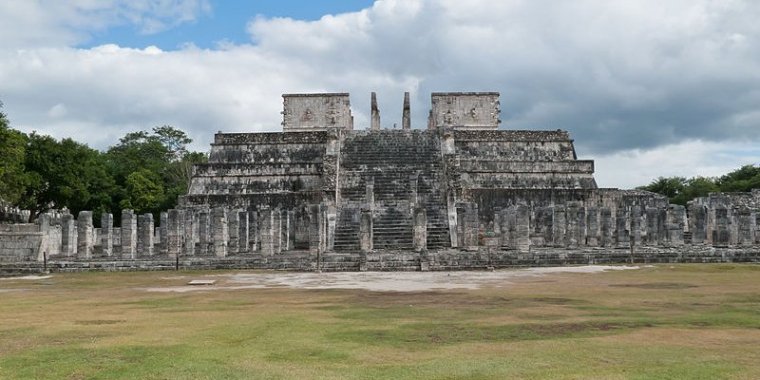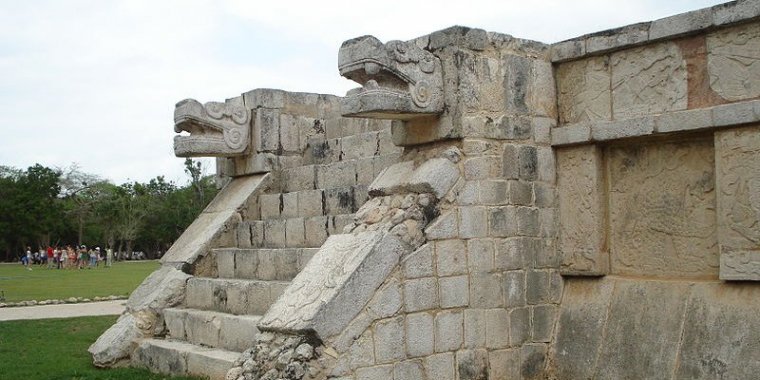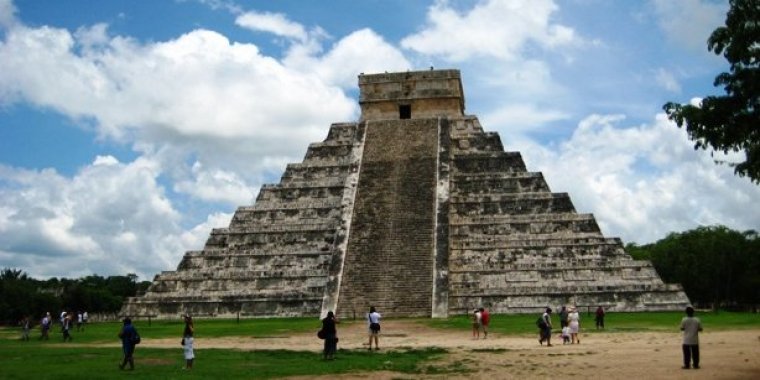| Published in Destinations |
Chichén Itzá, Mexico
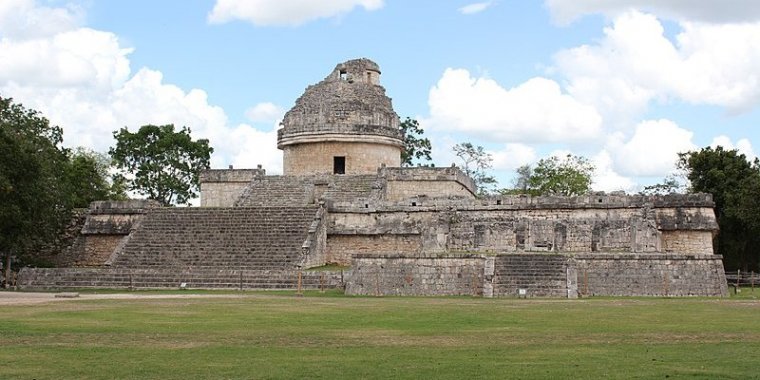
Chichén Itzá, El Caracol (the Observatory). ![]()
Chichén Itzá is the largest of the archaeological cities of the pre-Columbian Maya civilization in the Yucatán Peninsula of Mexico. It is one of Mexico's most visited tourist destinations. It was granted World Heritage Site status in 1988 by UNESCO World Heritage Site and was recently selected as one of the New Seven Wonders of the World.
Many tourists visit Chichen Itza as a day trip, especially from Cancún, more than 160 km (100 miles) away. This archaeological site is also an hour and a half away from Mérida, the capital of Yucatan. The Maya communities near Chichen Itza have developed many wonderful sites for travellers to rejoice in the Maya Cultural heritage. It is recommended you avoid a day-trip visit to Chichen Itza and schedule a night or two to enjoy all the activities nearby.
This allows time to see more than just a portion of this large site. If you stay a night here, come to the archaeological site early in the day before the sun is so hot, and before most of the day-trippers arrive.
Entrance fee to the area is M$232, or M$154 for Mexican nationals (2016) and if you want to film with a video camera, you'll need to pay an additional M$45. Digital camera with video capability are exempted. Tripods are forbidden unless you obtained special permits months ahead of time. Entry is free for children under 13, and on Sundays for Mexican nationals, so you may encounter larger crowds on Sunday.
If visiting during the rainy season, consider bringing an umbrella and/or a rainjacket. Otherwise, vendors will sell plastic ponchos for M$50. However, the rain comes and goes quickly, so it may be worth it to just tough it out.
Get in
By road, Chichen Itza is on the main highway between the capital city of Mérida and the resort city of Cancún. ADO bus service from Cancun costs M$258 one way and the trip takes three hours. If you are located outside of Chichen Itza, a number of companies organize tours.
If you have time and are looking for a more adventurist route, the libre road that runs parallel to the toll highway goes through and by many villages and gives a better feel for the area. If you take the libre route, you must be more alert for pedestrians and animals on the road, as well as the numerous speed bumps you will encounter. If after dark, stick to the toll road. Come by automobile or take the very regular bus service.
Get around
At the site you get around on foot. Wear sturdy, comfortable walking shoes; consider that you may want to try climbing rough stone stairs in them. Sunscreen and a broad-brimmed hat may be good ideas too. There is very little usable shade in the middle hours of the day. Bring a pair of binoculars, star-gazing and birding is incredible in this region. Also, if you want to know more about the Mayan local communities, their cooking, religious rites, calendar system and ancient arts, visit the small towns around Chichen.
See
These are the vestiges of a fascinating civilization of times past. Well informed guides speaking all major languages are available for hire here, or explore on your own with a guide book and map.
• The Pyramid of Kukulcan or El Castillo - the most famous landmark of Chichen Itza. This was a temple-pyramid dedicated to the Feathered Serpent God, Kukulcan. It is nicknamed "The Castle". Sculptures of the Feathered Serpents run down the sides of the northern staircase, and are set off by shadows from the corner tiers on the Spring and Fall equinox. (Since 2006, you can not climb El Castillo.)
• Interior Temple. The Maya would often build newer bigger temple-pyramids atop older ones. Archaeologists have constructed tunnels allowing a view of the earlier temple of Kukulcan inside the later one. Go in the door at the foot of the north stairway, and you can go up a steep interior stairway up to the room on the top where you can see King Kukulcan's Jaguar Throne, carved of stone and painted red with jade spots. It is an impressive sight, but the climb up the narrow interior passageway may be too much for those with some claustrophobia. Since 2006, you cannot climb the steps to the top of the most of the monuments.
• Temple of the Warriors. (Since January 2006, you cannot climb the Temple of the Warriors)
• The Great Market.
• Great Ballcourt. There are 7 courts for playing the Mesoamerican ballgame at Chichen Itza. This one is by far the largest and most impressive, not just at the site but in all of ancient Mesoamerica.
• Temple of the Jaguars. Attached to the ballcourt complex, with stone jaguar, feathered serpent columns, and murals inside.
• Sweatbaths. There are many Zumbul che structures found in both Chichen Itza and Old Chichen sites. These Maya sweatbaths played an important rule in ancient Maya spiritual traditions as places to purify the mind, body, and emotions, thus getting in touch with one´s pure spiritual energy.
• Platform of the Skulls.
• Cenote of Sacrifice.
• El Caracol. Circular temple on a rectangular platform, also sacred to Kukulcan, served as an astronomical observatory.
• High Priest's Grave. A smaller version of the "Castillo" served as a tomb for one of the city's rulers.
• The Nunnery Complex. Chichen Itza's royal palace back before the arrival of the Toltecs.
• The Red House.
• House of Deer.
• Temple of the Wall Panels.
• Akab' Dzib. Palace with hieroglyphic inscriptions.
• Xtoloc Cenote.
• Old Chichen. Another group of buildings and temples a few minutes walk from the center of the site. Old Chichen is clustered within the private property of Hacienda Chichen and not open to public visits. This Maya archaeological site is south of the commonly visited Maya ruins. It is part of the Maya Jungle Reserve and Nature Trails and open only to the Hacienda Chichen guests and visitors for birdwatching and horseback-riding tours. A few Maya temples are under reconstruction by INAH, they include: Initial Series Group, Temple of the Phalli, Platform of the Great Turtle, Temple of the Owls, Temple of the Monkeys.
• The Caves of Balankanche, where a large selection of ancient pottery and idols may be seen still in the positions where they were left in Pre-Columbian times.
• Light & Sound Show - At night starting at eight there is a light show projecting a video onto El Castillo. The show is free, but you should register for it before in one of the Yucatan municipals and then order and print your ticket online. Otherwise you'll have the risk to not get a place or at least stanf in line a long time. It takes places in the center of the ruins.
There's a light show while a video is projected onto El Castillo and a narrative in Spanish (headsets for other languages are available for a small fee). The show lasts around an hour (half hour getting seated, half hour show). They tell a great tale, which is very well done. If you can plan to be there at a "full moon" or a clear night with all the stars, it will be worth the effort, add to the experience and photographic results.
Do
• Yaxkin Spa (Hacienda Chichen hotel). Offers holistic beauty rituals based on ancient Maya traditions.
• The area has excellent birdwatching opportunities. Guests at the Hacienda Chichen have access to the hotel's bird refuge and extensive nature trails.
• There are several fantastic cenotes, fresh water sinkholes in the limestone, found near Chichen Itza. Some of them are surrounded by lush gardens with restaurants, washrooms and showers. During a hot day, cenotes make for a great way to cool your self off in the afternoon, take a break and split up your day.
• The Descent of Kukulcan During the three most celebrated days which witnesses The Descent of Kukulcan (the 19th, 20th and 21 March), Chichen Itza hosts music, dances and theatrical performances organized in the interior of the site, as well as at the access door.
Buy
Toh Boutique and The Maya Hut sells Maya craft, textiles and jewelry. Purchases support the Maya Foundation and the Nature Conservation and Bird Refuge Program, reforesting the region and preventing the illegal hunting of white tail deer and other animals in the area.They also have a tradition of dancing.
When dealing with vendors; Many will say "Only 1 dollar" or "1 peso", do not assume that is the actual price of items they are selling. Once you try to complete the transaction it will be actually 1 dollar off or 1 peso off and you will be ask to further "negotiate" with them. This might delay you unnecessarily if you are with a tour group. Don't be afraid to walk away, they will follow you with a better offer, they enjoy the challenge.
If on a tour, prices at a souvenir stop will be much more expensive than those offered by other vendors. Regardless, souvenirs will still be much cheaper than those found in Cancun. Be sure to have cash pesos; changing money may be difficult here, especially on weekends. Many of the items sold are treated with gasoline, especially products made from wood.
Eat and Drink
Hacienda Chichen. Offers regional, international and vegetarian dishes, in a 16th-century colonial terrace built with Maya carved stones (appropriated from the archaeological site by Spanish conquerors) overlooking lush tropical gardens. Some of the vegetables and fruits are organically grown by the owners in the south end of the gardens.
Be sure to drink lots of bottled water. Those not accustomed to the tropical heat and sun can otherwise risk dehydration.
Sleep
There are a handful of hotels by the ruins, along the highway nearby, and in the nearby town of Piste, in a variety of price ranges. Some have good swimming pools and restaurants. The town of Valladolid, 40 km away, is a less-touristed alternate base.
• Hotel Dolores Alba, +52-985-858-1555. KM 122 Mérida-Cancún, Free Road (180), 100 rooms, pool, convenient parking, downtown. US$35-45. Be sure to check out both pools - one is based on natural limestone formations and really quite spectacular.
• Hacienda Chichen, +52-999-924-4222, toll-free: +1 877-631-4005. Boutique Colonial hotel 16th-century Hacienda, eco-friendly with land dedicated to the protection of local flora and fauna. Maya Nature Reserve and Bird Refuge. Dr. Merle Greene's "Rubbing Collection," Gallery and Yaxkin Spa are open to site visitors. US$120-160 (single/double), US$165-225 (master suite).
• Mayaland Hotel and Bungalows, toll-free: +1 800-235-4079. Rooms ranging from standard hotel rooms to suites or bungalows with jacuzzi or loft. With its own entrance to the ruins. (They own the park, but the government owns the ruins.) US$88-244.
• Villas Arqueologicas (former Club Med), Carr. Mérida - Valladolid km 120. Pool, tennis courts, billiards. US$112 (standard room), US$225 (suite for 4). (Wikivoyage)
YOU MAY ALSO LIKE

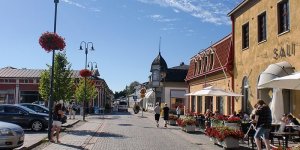

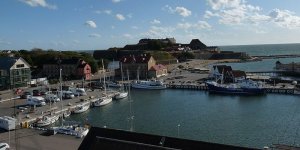
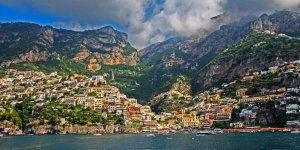

 If you own or manage a travel-related business such as a hotel, a bed-and-breakfast, a restaurant, a pub or a cafeteria, you can create a web page for your business for free on Titi Tudorancea Travel Info. » |
